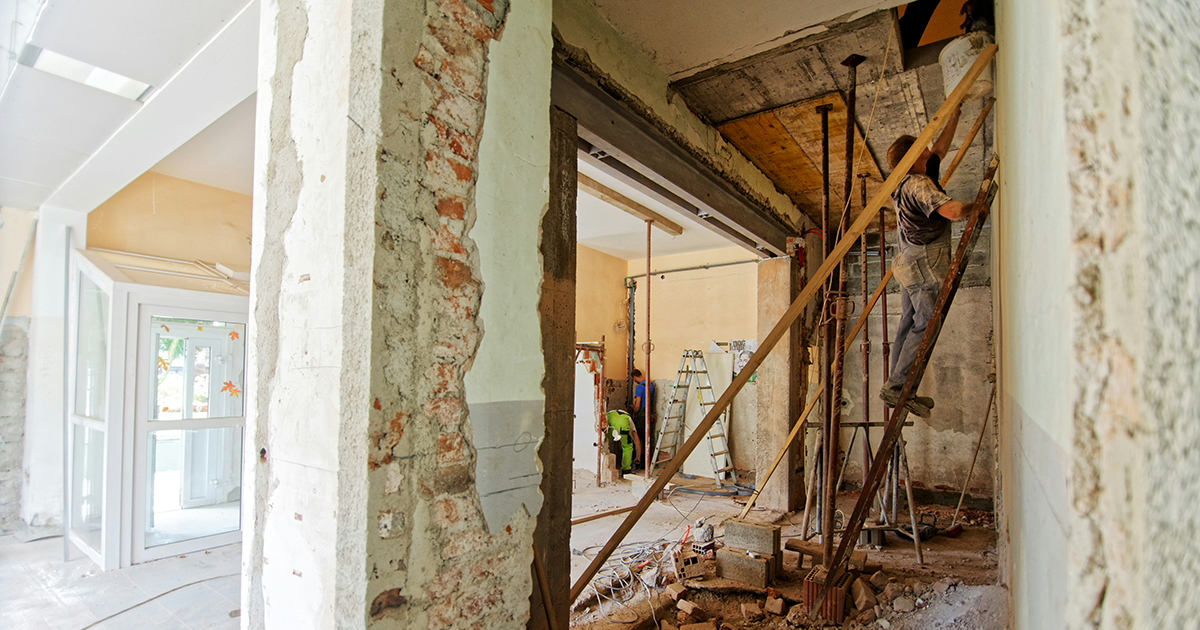Although before buying a home a visit is usually made to check that everything is correct, there may be some details that are overlooked or even some scam attempts. Therefore, hidden defects in the purchase of a home are more common than it may seem.
What is considered a hidden defect?
The definition of hidden vice is set forth in article 1484 of the Civil Code. This provision includes hidden vices such as those hidden defects that the sold item may have, if they make it unsuitable for the use for which it is intended, or if they diminish this use to such an extent that, if the buyer had known about them, he would not have acquired it or I would have paid a lower price for it.
In simpler terms, hidden defects could be understood as those flaws that the property presents and that cause it to not be in the conditions that the seller had communicated to the buyer before formalizing the transaction. That is, there are some defects so serious that they prevent the full use or exploitation of the property, in such a way that if the buyer had known about them, he would not have purchased it or would have done so at a lower price.
But this does not mean that the hidden defect makes the property unusable, since this would be considered another type of damage.
Although there is no list of defects that can be considered hidden defects, the vast majority are related to water, the foundation, finishes, insulation or the electrical system.
For practical purposes, a hidden defect is considered to be a defect that existed before the sale, that has a certain severity and that is not easy for the buyer to detect at first glance.
Are hidden defects subject to redress?
If you have bought a home and have just discovered that it has some hidden defects, do not worry, all is not lost. You can complain to the seller about the existence of these hidden defects and choose from the available solutions. It is a legal obligation of the seller.
According to article 1846 of the Civil Code, if the buyer detects hidden defects, they will have two options:
- The redhibitory action. With this first action, the contract is terminated, and the seller must reimburse the buyer for all expenses related to the sale that were paid. Additionally, if the previous owner was aware of the hidden defects, they must compensate the buyer for damages.
- The ‘quanti minoris’ action. With this option, a proportional amount of the price is reduced, at the discretion of the experts. The aim is to set a fair price for the sale, so no additional compensation will be possible.
Period for claiming in relation to hidden defects
As with any claim procedure, the deadline is essential.
In the case of a claim related to hidden defects, the deadline to claim depends on the type of home:
- Six months for second-hand homes.
- Two years for new homes.
In the event that hidden defects arise after the expiration of the maximum established period, you may opt for the civil liability policy. This is an insurance that covers totally or partially the repair of this type of defects and has a duration of:
- Ten years if the defects are in structural elements. Coverage will be 100%.
- Three years if hidden defects affect habitability installations. 30% of the repair cost is covered.
- One year if defects are found in finishes. Coverage is 5% of the cost.
How to claim in relation to hidden defects in the purchase of a home
Once hidden defects in the purchased home have been detected, the procedure to follow would be:
- Detect and assess all damages. It is important to analyze whether the defect is due to construction or improper use by the buyer. This may require a report from an architect or technical architect.
- Notify the seller in writing. They will be informed of the situation and the damages detected, including the date of the contract and the deadline to seek a solution.
- Wait for the response of the seller. This will largely determine the course of the process:
- If the claim is accepted, defects will be addressed and the process will conclude.
- If the claim is not accepted, the following options can be pursued:
- Resort to mediation. The Official College of Surveyors and Architects can mediate to avoid litigation.
- Judicial process. If an agreement has not been reached with the previous steps, the courts will decide who should be responsible for repairing the hidden defects. It will be necessary to present evidence that proves the previous existence of the defects before purchase.
Hidden defects in the purchase of a home may seem like a significant issue within the process and, depending on their severity, they may be. However, within the established period, they can be reported and repaired by the seller.
Further information
This article is part of our service Inheritance in Spain. Visit this section where you will find all the useful information on this topic, including a complete guide on Inheritance in Spain with a non-resident, expat or foreigner.
Solve your doubts
✅ Our staff speaks perfectly Spanish, Valencian, English and German with what will be able to communicate with us in your own language and thus clearly resolve your queries.
📍 Denia – Plaza del Convento, 6 – Mezzanine floor door B
📍 Valencia – Calle Creu Roja, 1 – Block 6, Floor 1, door 10 (* only by appointment)
✉📞 Contact: info@firmalex.com – Tel. +34 966 421 416 – Whatsapp +34 622 497 615



